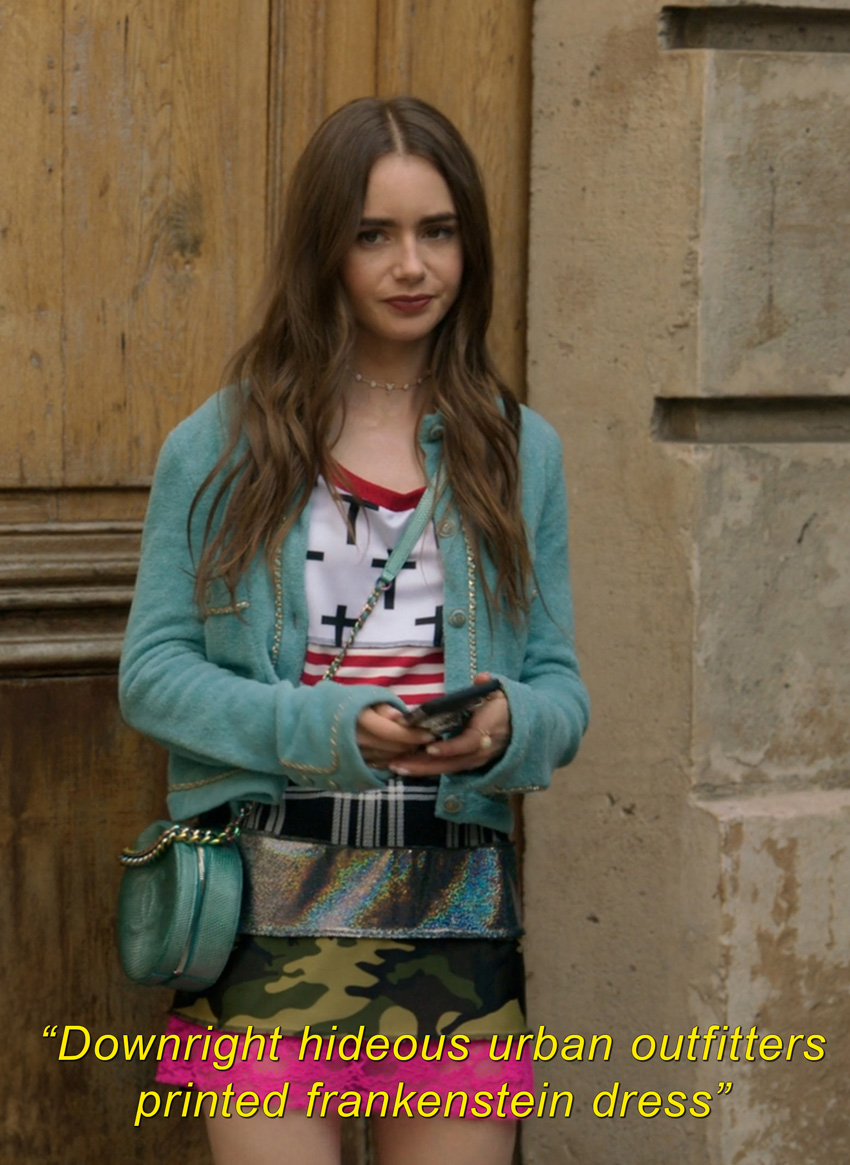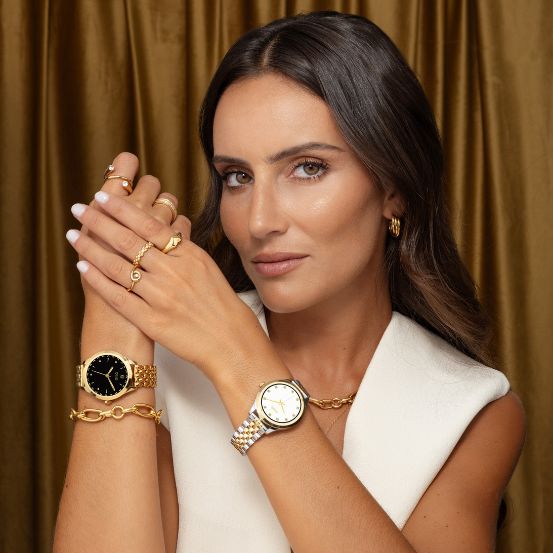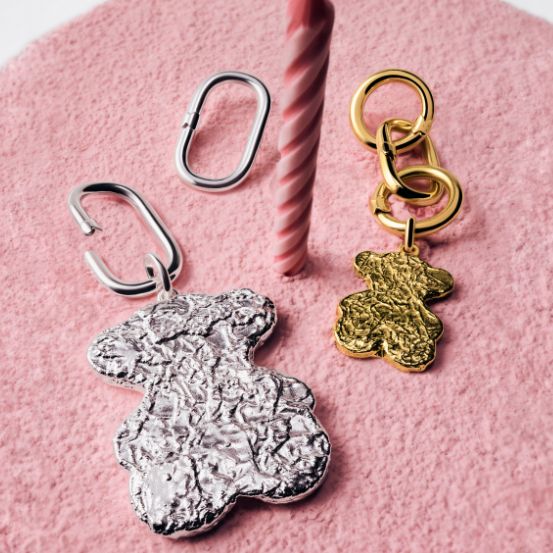The Big Book of Trends
About to celebrate 10 years as HauteLeMode, Luke Meagher has grown up in front of his audience. After a decade of criticizing fashion in front of hundreds of thousands of people, the influencer is no longer just the future of fashion media, he is its present.
“If it looks bad, it makes my job easier... and it's certainly more fun.” “I’m the ultimate hater when it comes to fashion.” “The lime green skirt isn’t ugly because of the color—it’s just ugly.” HauteLeMode's remarks cut deep. Laced with biting sarcasm, his commentary always delivers a potent dose of comedy, yet the lingering aroma is one of sharp, unapologetic honesty.
Since 2014, the then-teenage influencer has been spraying his opinions to what is now an audience of hundreds of thousands. The launch of his YouTube channel marked more than just the start of his online career; it was the birth of his love affair with fashion. But the channel wasn’t solely fueled by his dedication to this glamorous world—it was driven by an ambition that burns within him. Recognizing the untapped potential of YouTube, Meagher seized a niche that he now firmly owns.
While his cheeky personality and sharp wit quickly captivated online audiences, the fashion industry itself was slower to warm to him. Unlike his virtual followers, the more established players in the industry initially resisted his presence. Branded as too honest, many turned their noses up at the YouTuber's commentary. But fashion, like all things, has evolved. After a decade of unwavering consistency, even the titans of the industry were forced to acknowledge his value.
Today, however, Meagher no longer feels the need for their approval. As he puts it, “I know my worth—it’s just a matter of waiting for others to catch up.”
When did you first develop your interest in fashion?
I remember going with my mom to the Metropolitan Museum of Art…We had just missed the Alexander McQueen Savage Beauty exhibit, which means that it must’ve been around 2011, I must’ve been 14 or 15. I went to school in New York, I’m from Staten Island originally but I went to school in Manhattan. I was close to Soho so I would go with friends there all the time and just watch the people walk by. I remember being dazzled by the way people dressed. It’s New York so it’s not like going up to them and complimenting them will give you much - they’ll just ignore because it’s New York. That’s when I got into digital fashion… early Haute Le Mode was a street-style blog. Instead of talking to people, I would just take pictures of them.
So early on you chose a visual medium in place of the written one, something you continue with your social media - it’s all video. Why did you make that decision so early on?
I came of age when YouTube was becoming super popular… I was watching Troye Sivan when he was still a YouTuber. I remember seeing the way people, myself included, got attached to people who were on our computer screens. I realized nobody else was talking about fashion. I realized that nobody else was talking about fashion in the way that I wanted to. I thought, if I can do that, maybe I can attract an audience who enjoys my content the same way I enjoy others’. By the time I was 14 or 15, it seemed like we had moved past magazines and newspapers. I was learning about fashion through my Twitter feed in school when I shouldn’t have been. I read articles from blogs and independent writers like The Fashion Law. That’s how I got into fashion. I enjoyed written content, but I found digital video to be a more forward-thinking medium, especially with the way people develop parasocial relationships. I think I wanted to be famous in that way. I realized that creating video content could potentially get me to that level more effectively than the written word.
That’s really interesting—and smart—to utilize parasocial relationships for professional gain. Speaking of your audience, what I find interesting about your content is the balance you achieve. You introduce people to fashion content and essential fashion moments, but it never feels repetitive for those who already know about it. How do you balance speaking to “fashion people” who know what you’re talking about while also introducing it to those who might not?
I appreciate you saying that. Sometimes I worry that I do get repetitive, but I think what appeals to people is the raw honesty. Within fashion, there’s not a lot of that. So even if someone knows about a dress, designer, or celebrity, hearing someone speak about it freely might feel refreshing. I’m always learning and educating myself, so whenever I find something new and interesting, I try to share that with my audience.
You mentioned honesty, which is interesting because traditional fashion media has become less critical. They can’t afford to be as honest. It seems like modern fashion media is following suit. There seems to be a growing fear of being honest. Who do you think should have the role of the critic?
I think everyone has opinions, especially about fashion. It’s similar to food, everybody eats. Everyone wears clothes, so even if it’s an uneducated opinion, people still become their own fashion critics. Different communities have their own fashion criticisms of what’s appropriate or not. The question is more so, who do people trust enough to listen to as a fashion critic? Usually, it’s people who make them laugh, teach them something, or keep them interested. If you can get people involved in a storyline or a narrative for a show that’s critiquing it. Historically, fashion criticism wasn’t just about railing against bad collections; it was also about telling people what they were seeing on the runway.
I’m sure that can be difficult, especially if you’re critical of them. Do you feel that you get the respect you deserve in the industry?
It depends. Three years ago, I’d probably have said no, but now I do think I get the respect I deserve. But the industry has changed, it has adapted to the internet, it has embraced influencers and content creators. But, at the end of the day, the industry relies on hierarchy, and relationships — and I’ve put in many years. It’s not about what you know but who you know. Now, I do feel respected by certain brands. I mean, do I wish I would get a better seat sometimes? Absolutely. Not just to boost my ego but because when my job is to articulate what I’m looking at for my audience, it’s helpful to have a vantage point. But I’d say I keep my expectations low to maintain a level head and not feel bad about myself when things don’t go as I’d like. That mindset helps keep me sane and keeps the feelings of “I deserve this” at bay. Even though I think those are very natural in fashion. Fashion week is like high school: you feel bad about yourself, you feel like you’re an outcast, you feel like you’re not cool. But if you keep your expectations low, your feelings won’t get hurt. So, long story short, I’ve had to change my mindset of what I think I deserve. I know what my value is, it’s just a matter of waiting for other people to catch up.
That’s smart, expectations are just premeditated resentments…
I like that… Three years ago I would’ve had a different response. Much more furious for sure.
That’s what we call growth.
[Laughs] Yeah, exactly.
Your content is admittedly very honest, for the better and worse. How do you balance honesty with the need to network in the fashion industry?
People can be sensitive about their work, and I understand that as someone who also puts things out there. But I’m yet to have a moment where a fashion designer lunges at me. I have had designers tell me that they don’t care what I think — what I think is respectable, it’s their job to make clothes and mine to critique them but they don’t have to take in what I say. I’m also cognizant of where I’m welcomed, I have respect for the fact that if I’m going to be critical of a brand, I’m not going to go knock on their door. I set boundaries for myself, knowing where I’m not wanted and being okay with that. Also, I am very raw with my opinions, and even if I’m not a fan of a body of work, I always try to understand where a designer is coming from.
Your content is spread through different platforms, from 40-minute Youtube videos to 30-second TikToks. Do you find that your audience differs from one social media app to the other?
Definitely. Short-form content, like on TikTok, is good because it can reach more people quickly whereas long-form content, it’s something that you have to have your audience want to intentionally click. Short-form content is much more about trying to hook people into staying around for longer. But I find that I prefer long-form content because I know that, at the end of the day, I know my audience is going to learn a lot more. And, with YouTube, people learn your name, they become interested in you — again, they build that parasocial relationship.
YouTube has also proven to be quite sustainable for creators, you’re about to celebrate your 10th year on it. Do you think platforms like TikTok and Instagram will have the same longevity?
Yeah, in December it’ll be 10 years. I think that these other platforms will have to adapt and morph into something different. I don’t know if it’ll have the long-lasting effect in its current form but I also don’t see it going away anytime soon. People probably said the same thing about YouTube five years ago, yet it’s still here. YouTube provides stability with a loyal audience, but I also see short-form content sticking around because it caters to quick, zeitgeist moments like trends and memes. Brat summer, cottage core, those will always be around.
As time goes by, do you find that people in the industry who grew up watching you are now giving you more power because they’ve known you for so long?
To a degree, yes. When I started, PR people didn’t care much about YouTube. But as younger people have gotten jobs and moved up in their ranks, they have a built-in respect because they know who I am. I think that also works in the opposite direction, I’ve been banned from a few shows that I’ve never even covered because they know I’m critical. I’ll never forget a PR person telling me that they learned everything about the brand they worked for through my videos, after getting the position they were currently in. That’s intriguing to me because I’m the source for these people whose jobs are to hear, sleep, and breathe these brands.
You’ve been what I consider the future of fashion media—someone on social media talking about fashion differently, sharing knowledge in a way that’s honestly more successful than traditional fashion media. As you enter your 10th year, what do you think is the future of fashion media?
Do you want to give my optimistic view on that future or where I think it’s actually going?
I’m interested in hearing both.
Where it's going now is very shopping-heavy, which it always has been historically. But now, it’s much more about covering what’s happening digitally or in celebrity culture. There's less emphasis on discussing fashion shows, brand histories, or the meaning behind designs unless a brand is paying for it. It's more about "buy it because this celebrity is wearing it."— it’s all about buy, buy, buy. What I think the future of fashion media should be is teaching good shopping habits. Teaching whether something feels authentic to a brand and whether it’s a quality product. Many brands have a hit product, and others copy it just to capture market share. But they’re not focused on the quality that luxury brands should embody. Educating shoppers is the only way to improve from an environmental and fast fashion perspective.
You're about to celebrate a decade with La Mode. What do you think is the secret to maintaining relevance in the fashion space?
Honestly, it’s consistency. In fashion, there's this idea that you have to be young and cool to be relevant. But I’m realizing that to remain relevant, you need to have consistent dialogues with designers, brands, and audiences. It’s important to engage not just the youth, but also older generations like Gen X and Boomers, who are just as interested in what I do. To loop it all back, it's about trust—with both brands and your audience. Evolving with your audience and maintaining a strong, dedicated following is key. Whether your audience is big or small, as long as it's strong, others will notice and want to be part of that community.
You have a series on your channel on what you consider to be the most important shows for fashion lovers to know. What are your top three favorite fashion shows of all time?
First, Highland Rape by Alexander McQueen. It’s the perfect mix of raw storytelling with historical and personal perspectives, backed by technical skill. Second, Prada’s Spring 1996 Ugly Chic collection—it challenged the idea that fashion has to be pretty and perfect. Third, a Virgil Abloh Off-White Spring/Summer 2018 collection inspired by Princess Diana, where Naomi Campbell closed the show. It was an amazing blend of pop culture and Abloh’s lexicon, retelling Diana's story from his perspective.
Our issue is dedicated to fashion with a capital F. What does fashion mean to you?
It's like rewriting nostalgia. It's about bringing forward memories and feelings that people have—whether they're great and wonderful or not—but still feeling nostalgic about them. It's about recontextualizing those memories for a new audience and for themselves. If we look back at the work of every great designer, from Dior to Phoebe Philo, you can see how their childhoods, their upbringing, their aunts, mothers, dads—everyone—have influenced their work. They’ve taken elements from their world growing up and brought them into the new age, the new wave, redistributing that nostalgia to others. And then, for those young people who are shown these amazing things now, this will become their new nostalgia in the future. It’s like we’re always repackaging nostalgia.
Translated from the original on "The Big Book of Trends" issue, published September 2024. Full credits and stories in the print issue.
Relacionados
.jpg)



.jpg)

.jpg)

